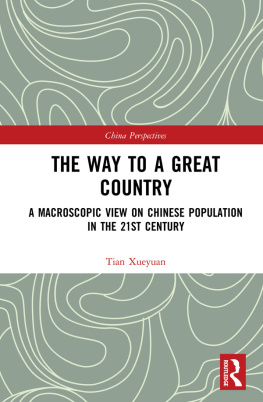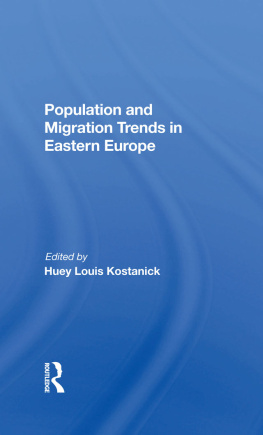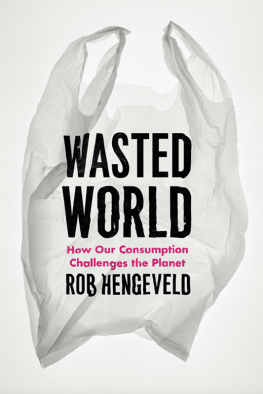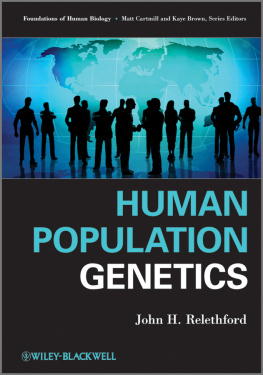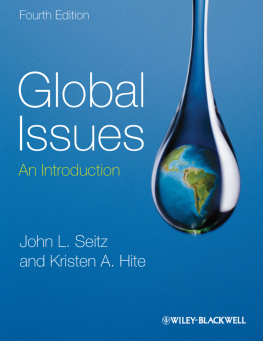First published 2008 by Transaction Publishers
Published 2017 by Routledge
2 Park Square, Milton Park, Abingdon, Oxon OX14 4RN
711 Third Avenue, New York, NY 10017, USA
Routledge is an imprint of the Taylor & Francis Group, an informa business
Copyright 2008 by Taylor & Francis
All rights reserved. No part of this book may be reprinted or reproduced or utilised in any form or by any electronic, mechanical, or other means, now known or hereafter invented, including photocopying and recording, or in any information storage or retrieval system, without permission in writing from the publishers.
Notice:
Product or corporate names may be trademarks or registered trademarks, and are used only for identification and explanation without intent to infringe.
Library of Congress Catalog Number: 2008002003
Library of Congress Cataloging-in-Publication Data
Population growth : the vital revolution / Ronald Freedman, editor.
p. cm.
Reprint. Originally published in 1964 as: Population: the vital revolution.
ISBN 978-0-202-36196-3
1. Population. 2. Demographic transition. 3. United StatesPopulation. I. Freedman, Ronald, 1917- II. Freedman, Ronald, 1917- ed. Population: the vital revolution.
HB871.P6677 2008
304.62dc22
2008002003
ISBN 13: 978-0-202-36196-3 (pbk)
Ronald Freedman
The vital revolution of modern times is described in this book by nineteen experts, analyzing important world population trends in non-technical language. These essays were originally prepared as lectures for a Voice of America Forum Series, broadcast in 1963 to eighty-five different countries. Their purpose was to acquaint an intelligent world audience of non-specialists with some of the best current scientific knowledge and opinion about population trends. Because of the nature of the audience, statistical tables, footnotes, and other scholarly abracadabra were inappropriate. The resulting product was a series of read-able essays by experts on a subject in which there is increasing public interest.
Modern population trends are unique in historical perspective; describing them as part of a vital revolution is not an exaggeration. The more popular term population explosion is less accurate, because it refers to only one aspect of the current situationthe unprecedented growth rates. In the last two centuries other important trends have developed, also without precedent in all of the previous millennia of human history. While the size of population growth is very important in itself, the essays in this volume demonstrate that there are many other aspects of structure and change in populations which are equally important.
What are the most important population trends of the modern period? Any summary statement is necessarily arbitrary in selection and emphasis, but the following list and brief discussion is one basis for organizing much of the material in the essays which follow:
1. The rate at which populations are growing is without historical precedent, whether we consider the world as a whole or major continents and regions.
Hausers opening essay demonstrates how unique the growth rates are for the world and for major regions. Also, each of the essays about a particular region or country demonstrates that everywhere spectacular rates of growth have occurred or are in immediate prospect. How such rapid growth rates have developed in the past is the central topic treated in the Stolnitz essay on The Demographic Transition: From High to Low Birth Rates and Death Rates.
Very rapid growth rates today are best illustrated in Latin America, as the essay by Smith indicates. Lorimers discussion of Africa indicates that growth rates there are still relatively moderate, although faster increase is in the offing. The moderate growth rates for the United States, whose history is described by Vance, are still sufficient for very considerable population growth.
2. There has been an unprecedented decline in mortality in the developed countries. Similar declines have already occurred or are likely to occur soon in the newly developing countries.
Of course it is this rapid decline in mortality, while fertility remains high or declines slowly, that produces the large rates of population growth. No significant part of the world population growth is attributable to increasing birth rates, although such increases did occur in some countries in the early part of the demographic transition from high birth and death rates to low birth and death rates.
The essay by Spiegelman indicates how this mortality decline occurred in the United States and where some of the important remaining differences are to be found among various parts of our population. Keyfitz shows how the mortality decline in the developing countries is a central issue in their struggle for higher standards of life. Each essay about a country or region deals with a similar issue in a specific situation, for the decline in mortality, universally desired, is occurring throughout the world and is affecting the basic vital balance of population in relation to the social structure and resources of each country.
3. Fertilitythe birth rateis becoming the dynamic and problematic factor in population change for the first time in human history.
It is likely that fertility has been less than the physiological maximum possible in most societies over most of history, and it is also likely that birth rates tended to remain relatively stable in most societies for rather long periods. Short-run changes in birth rates and in average family size were probably rare. Over most of mans history, changesespecially shortrun changes-in population growth rates have developed mainly from variations in the death rate. In general, a population was likely to adjust to an unfavorable circumstance, such as a flood or famine or pestilence, by an increase in the death rate rather than a decrease in the birth rate. In especially good times the population grew more rapidly. This essentially Malthusian description of population change probably applies to much of the history of the world before the modern period.
Now, however, in much of the West, the picture has changed. Mortality rates are rather stable at such a low level that further declines cannot be very great.
In addition, for the first time in human history, birth rates and family size are being adjusted both up and down on a massive scale as the cumulative effect of millions of couples making short-run decisions about the number and spacing of their children. These decisions are implemented by a variety of means for family limitation, ranging from contraception (including the rhythm method) to induced abortion and sterilization. These variations in fertility are now much more important than variations in mortality for the growth rate of Western populations. In such a highly developed country as the United States, death rates are now so low in the crucial reproductive ages (under forty-five for women) that Ansley Coale was able to demonstrate a few years ago that even the achievement of complete immortality (with a death rate of zero!) would have less effect than a 15 per cent increase in fertility rates on the long-run growth rate of the United States population.


